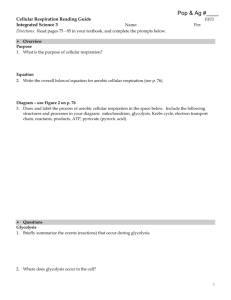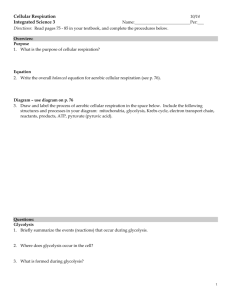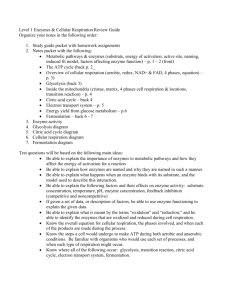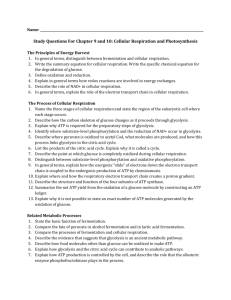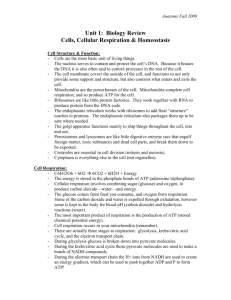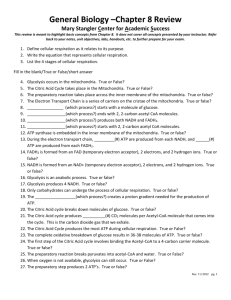Cellular Respiration - Emmanuel Biology 12
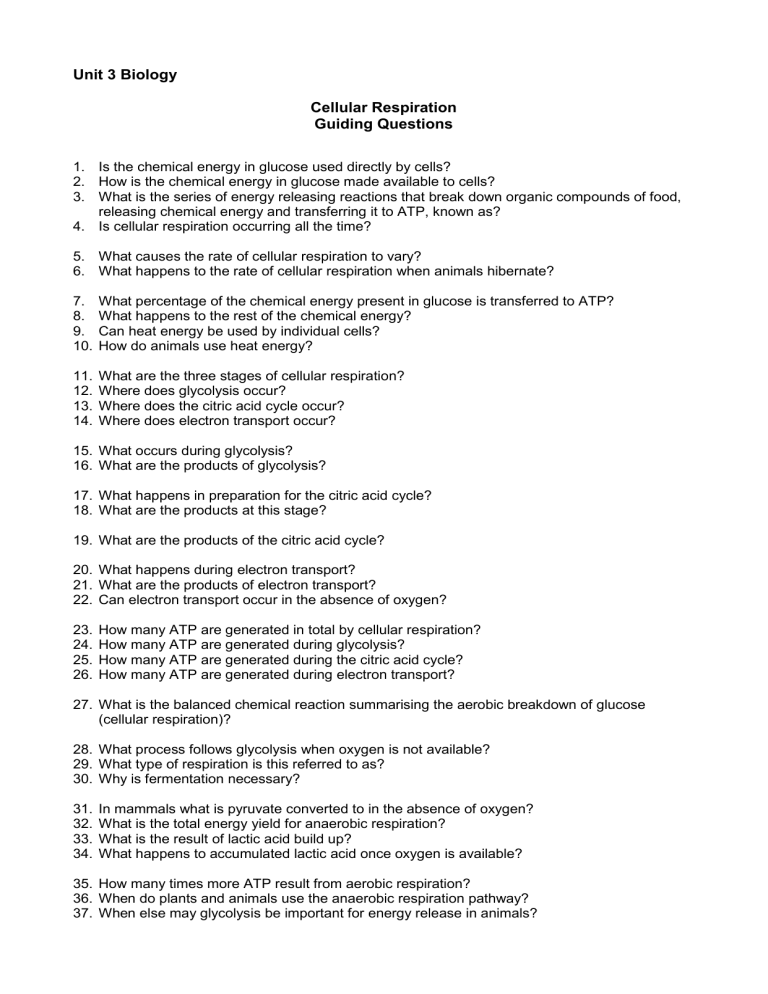
Unit 3 Biology
Cellular Respiration
Guiding Questions
1. Is the chemical energy in glucose used directly by cells?
2. How is the chemical energy in glucose made available to cells?
3. What is the series of energy releasing reactions that break down organic compounds of food, releasing chemical energy and transferring it to ATP, known as?
4. Is cellular respiration occurring all the time?
5. What causes the rate of cellular respiration to vary?
6. What happens to the rate of cellular respiration when animals hibernate?
7. What percentage of the chemical energy present in glucose is transferred to ATP?
8. What happens to the rest of the chemical energy?
9. Can heat energy be used by individual cells?
10. How do animals use heat energy?
11. What are the three stages of cellular respiration?
12. Where does glycolysis occur?
13. Where does the citric acid cycle occur?
14. Where does electron transport occur?
15. What occurs during glycolysis?
16. What are the products of glycolysis?
17. What happens in preparation for the citric acid cycle?
18. What are the products at this stage?
19. What are the products of the citric acid cycle?
20. What happens during electron transport?
21. What are the products of electron transport?
22. Can electron transport occur in the absence of oxygen?
23. How many ATP are generated in total by cellular respiration?
24. How many ATP are generated during glycolysis?
25. How many ATP are generated during the citric acid cycle?
26. How many ATP are generated during electron transport?
27. What is the balanced chemical reaction summarising the aerobic breakdown of glucose
(cellular respiration)?
28. What process follows glycolysis when oxygen is not available?
29. What type of respiration is this referred to as?
30. Why is fermentation necessary?
31. In mammals what is pyruvate converted to in the absence of oxygen?
32. What is the total energy yield for anaerobic respiration?
33. What is the result of lactic acid build up?
34. What happens to accumulated lactic acid once oxygen is available?
35. How many times more ATP result from aerobic respiration?
36. When do plants and animals use the anaerobic respiration pathway?
37. When else may glycolysis be important for energy release in animals?
38. What happens to pyruvate during the fermentation process in yeast?
39. What influences the amount of carbon dioxide and ethanol (alcohol) formed?
40. Are there other substrates for cellular respiration besides glucose?
41. What biomolecule provides the most energy per gram?
42. Why are hyperbaric chambers used to heal injuries?
43. Why are higher levels of oxygen than normal useful in healing injuries?
44. What happens when a coronary artery becomes blocked?
45. How can we identify whether affected heart tissue is dead?
46. What does PET obtain an image of when used to diagnose heart muscle damage?
47. How can we tell the difference between live and dead heart tissue?


